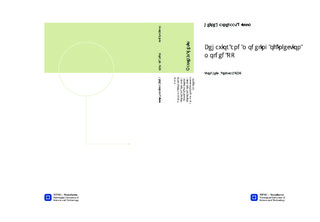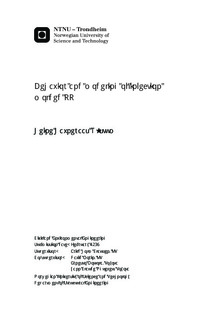| dc.description.abstract | The structural impact laboratory (SIMLab) at NTNU have developed a constitutive material modelto represent the behavior of brittle and ductile polymeric materials. The material model can be implementedinto finite element solvers, e.g. LS-Dyna and Abaqus. In this thesis, the material model sability to describe the behavior of an injection molded polypropylene, provided by TOYOTA, hasbeen studied.The material had during previous experimental tests shown an inhomogeneous material behavior.As the material was loaded in uniaxial tensile, the core would fracture prior to it s outer section.This skin-core behavior has been observed for many injection molded polypropylenes, but theeffect varies substantially due to differences in the molding process and the material additives. Todetermine how the material parameters would vary through the material s cross section, the skincore effect had to be better understood.To be able to separate the core from the skin, experimental tests were conducted using specimenswith and without a reduction in its section thickness. The difference between the material parametersof the specimens with a full thickness and with a reduced thickness, was suggested to be thematerial parameters of the skin. The experimental tests showed that the main difference was linkedto the specimens yield stress and damage propagation. The specimens with a full section thicknesshad a higher yield stress and a lower damage propagation than the specimens with a reduced sectionsthickness.Experimental tests were also performed to determine how the material s molding thickness wouldaffect it s material properties. Three different molding thicknesses were used; 2mm, 3mm and 4mm.The tests indicated that the molding thickness mainly affected the damage propagation and yieldstress of the material, the damage propagation increased and the yield stress decreased with anincrease in the material s molding thickness. The tests suggested that the difference was larger forthe material s skin than for it s core, which may be due to the distribution of particles.To evaluate SIMLab polymer model s ability to describe the material s behavior, numerical simulationsof the experimental tests were conducted. The numerical simulations ability to reproducethe behavior of the experimental tests would be used to determine the accuracy of the materialmodel. The numerical models were composed of two sections; one for the core and one for the skin.Where the behavior of each section was controlled by it s own material card. The thickness of theskin was determined to be 0.2mm, based on visual evidence using an optical microscope.Drop-tower tests and tensile loaded notched specimens were used for validation of the materialmodel. The simulation results, indicated that SIMLab s polymer model could predict the material sbehavior well, but that improving the formulation of the plastic flow will yield better results. Thecurrent formulation is not able to capture the material s transverse behavior and the material sbehavior in compression. | nb_NO |

